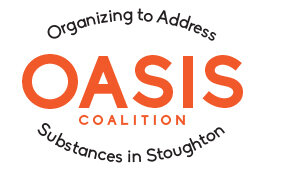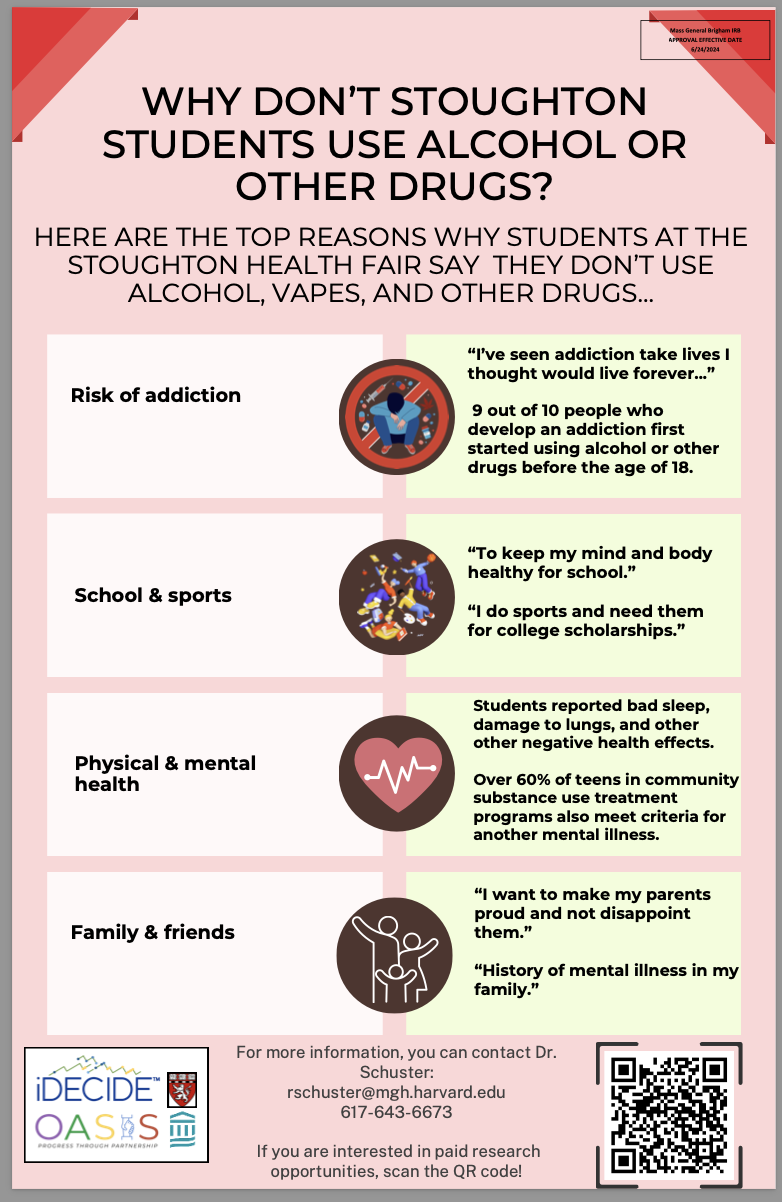About Stoughton OASIS
The OASIS coalition was established in 2004 by a small group of
committed community partners who were committed to address youth
substance abuse in Stoughton. Since 2004, OASIS has received numerous
state and federal grants. Our membership has grown to incorporate many
new partners, while maintaining a strong core of founding members. In
October 2011, OASIS was granted the 2nd 5-year installment of a federal
Drug Free Communities Grant. OASIS is hosted by the Stoughton Prevention
Department.
Today the OASIS coalition is a vibrant community coalition, staffed by the
Stoughton’s Prevention Coordinator. In 2022, the Coalition oversees 2
grant-funded initiatives to support Stoughton. Both grants are from the MA
Department of Public Health: MassCALL3 - an collaborative between Stoughton,
Avon, Easton and Norwood to address adolescent substance misuse and
Prevention in Early Childhood - an initiative to reduce / mitigate risk factors
and increase protective factors among Stoughton’s youngest residents in
order to prevent future substance misuse.
What protects Youth from Substance Abuse (and other risky behaviors)?
OASIS uses research to drive our strategies. In addition to risk and protective factors (described below), we look at how our community is engaged in increasing access to positive childhood experiences.
What puts Youth at Greater Risk for Substance Abuse?
Risk and protective factors are things that may be present or absent in a young person’s life that increase or decrease their likelihood to use alcohol and other drugs. Using youth data and information collected through focus groups and interviews, OASIS has identified risk and protective factors that are more common among Stoughton youth. Here are some few of the risk and protective factors that OASIS addresses through our prevention strategies.
Misperception of Peer Use
Most students do not use alcohol or other drugs. And, most students believe that substance use among their peers is the norm. When students hold accurate perceptions of the non-use norms, they are significantly less likely to use substances themselves. (Wambeam, & Canen, Linkenbach, Otto, 2013)
Age of onset
The earlier the age at which someone starts drinking the greater the risk that s/he will develop alcohol-related problems later in life. A delay in drinking until 20- to 21-years-old reduces the risk of developing alcohol-related problems (Chou et al, 1992).
Youth perception that parents approve of their alcohol or drug use
One of the most consistent risk factors for adolescent drinking is perceived parental approval (Donovan, 2004).
Parental monitoring
Positive parental style and close monitoring by parents are proven protective factors for adolescent’s use of alcohol and other drugs (Stewart, 2002).
Low perception of harm
Low perception of harm towards alcohol and drug use is a risk factor for use (Henry et al, 2005). Individuals with attitudes or values favorable to alcohol or drugs are more likely to initiate substance use (Hawkins et al, 1992).
Youth access and availability
The majority of alcohol consumed by youth is obtained through social sources, such as parents and friends, at underage parties and at home (Birckmayer et al, 2004). Availability of alcohol or illegal drugs leads to increased use (Hawkins et al, 1995).
Poor school achievement and low school bonding
Adolescents who have a low commitment to school or do poorly are more likely to become alcohol involved (Birckmayer et al, 2004).
***from http://captus.samhsa.gov/access-resources/common-risk-and-protective-factors-alcohol-and-drug-use


